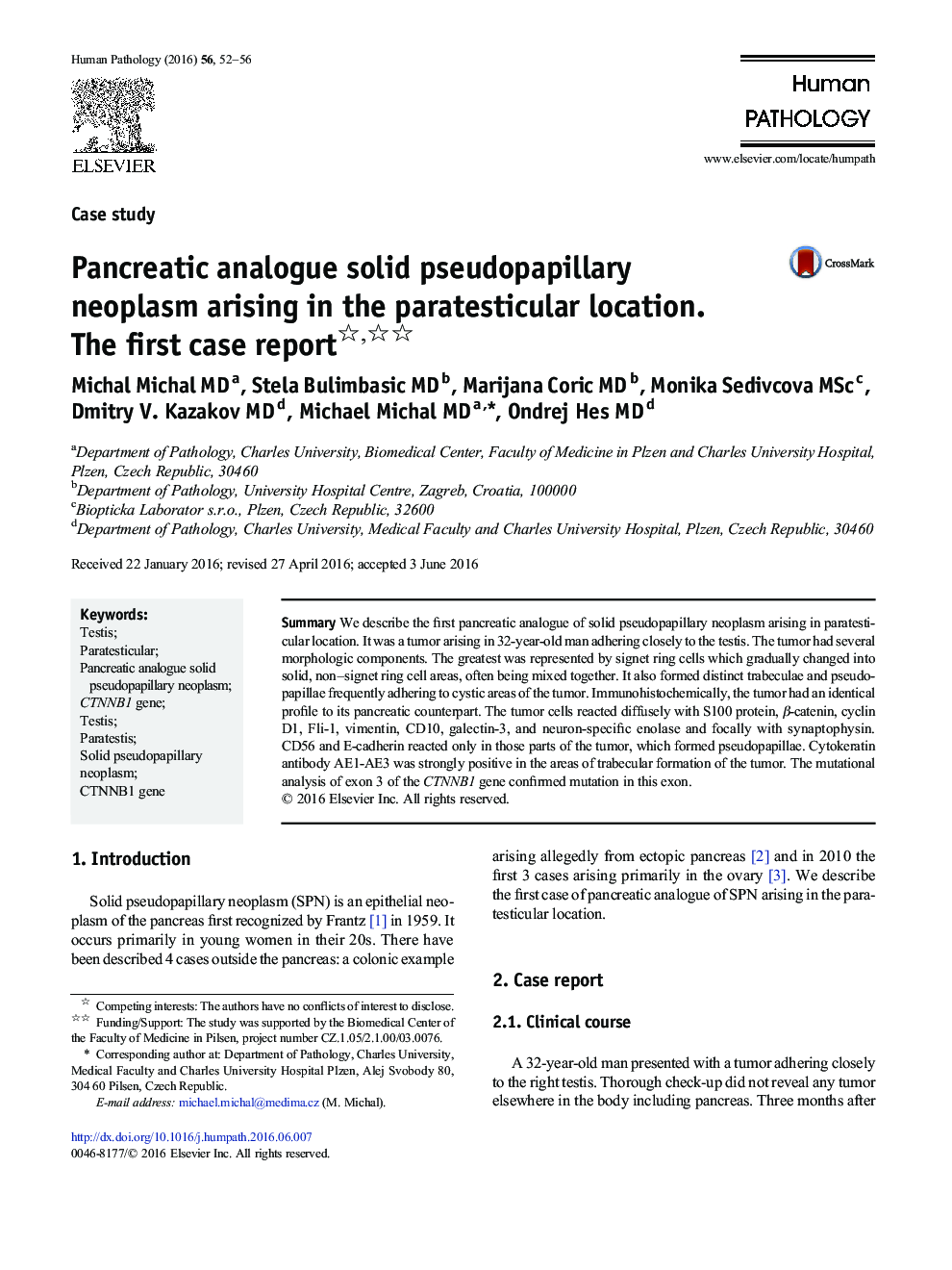| Article ID | Journal | Published Year | Pages | File Type |
|---|---|---|---|---|
| 4132417 | Human Pathology | 2016 | 5 Pages |
SummaryWe describe the first pancreatic analogue of solid pseudopapillary neoplasm arising in paratesticular location. It was a tumor arising in 32-year-old man adhering closely to the testis. The tumor had several morphologic components. The greatest was represented by signet ring cells which gradually changed into solid, non–signet ring cell areas, often being mixed together. It also formed distinct trabeculae and pseudopapillae frequently adhering to cystic areas of the tumor. Immunohistochemically, the tumor had an identical profile to its pancreatic counterpart. The tumor cells reacted diffusely with S100 protein, β-catenin, cyclin D1, Fli-1, vimentin, CD10, galectin-3, and neuron-specific enolase and focally with synaptophysin. CD56 and E-cadherin reacted only in those parts of the tumor, which formed pseudopapillae. Cytokeratin antibody AE1-AE3 was strongly positive in the areas of trabecular formation of the tumor. The mutational analysis of exon 3 of the CTNNB1 gene confirmed mutation in this exon.
